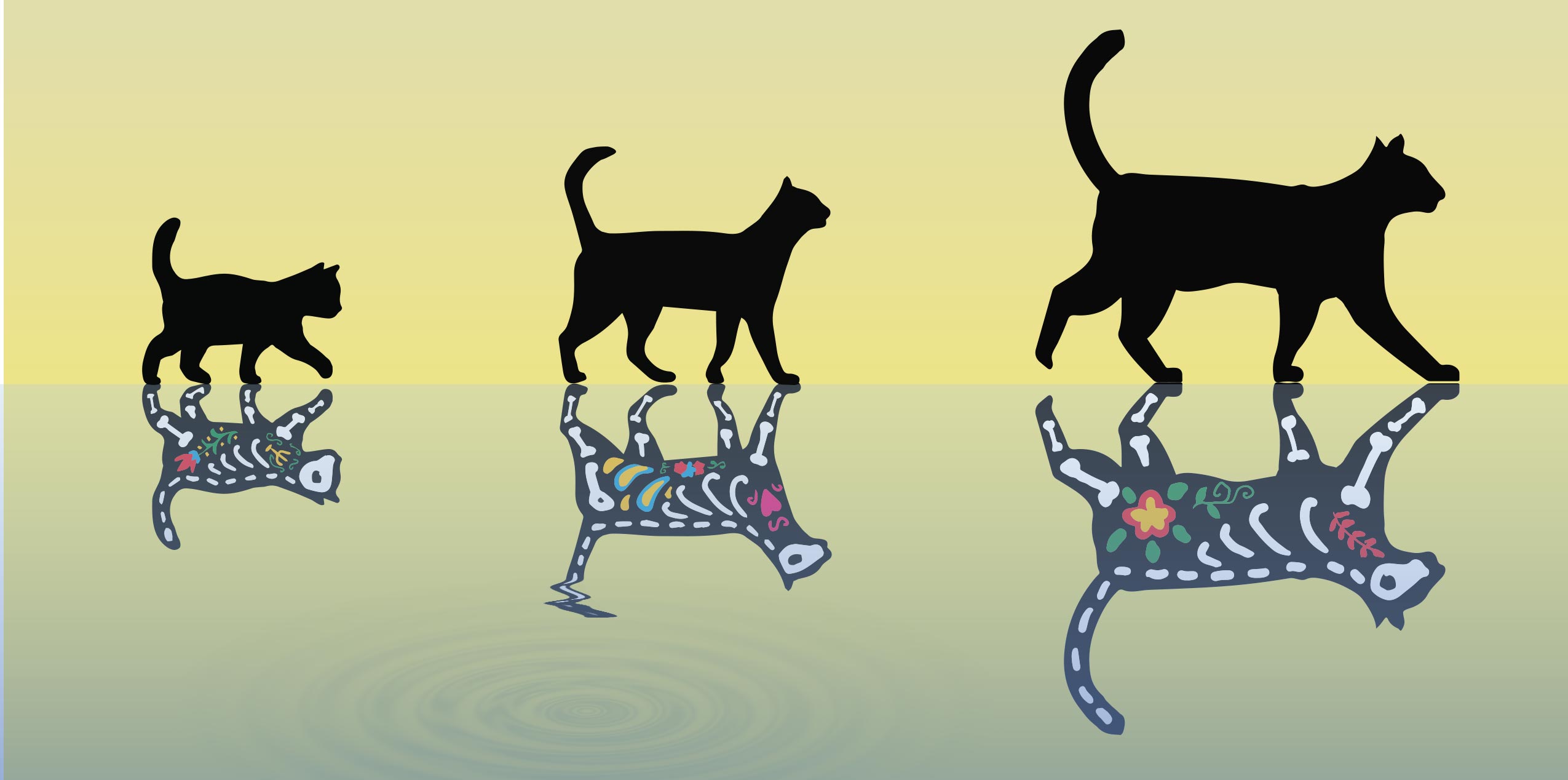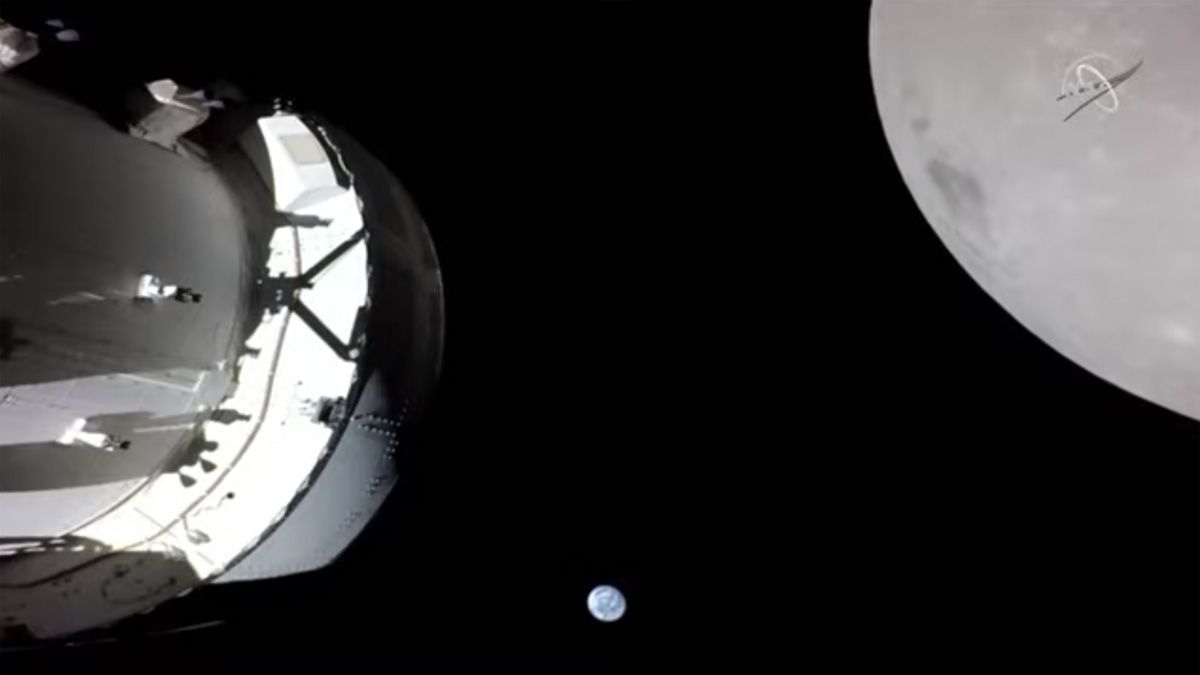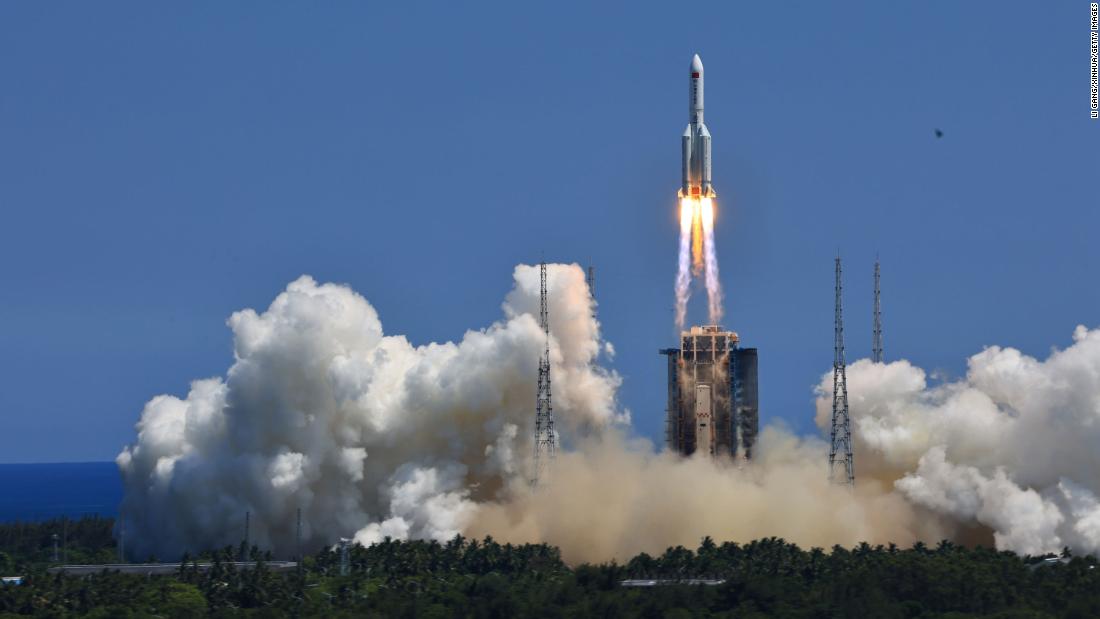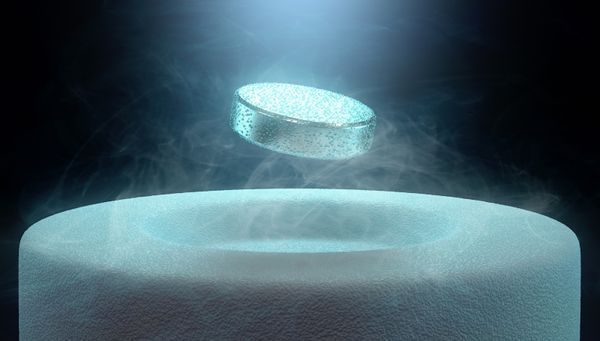
ETH Zurich의 과학자들은 Schrödinger의 더 무거운 고양이를 만드는 데 진전을 이루었습니다. 이 고양이는 동시에 살아 있을 수도 있고(위) 죽었을 수도 있습니다(아래). 크레딧: Yiwen Chu/ETH 취리히
ETH Zurich의 연구원들은 두 가지 진동 상태의 중첩에 수정을 배치하여 지금까지 가장 무거운 슈뢰딩거 고양이를 만들었습니다. 그들의 결과는 더 강력한 큐비트로 이어질 수 있으며 큐비트가 일상 생활에서 관찰되지 않는 이유를 설명하는 데 도움이 될 수 있습니다.
- ETH Zurich의 연구원들은 Schrödinger의 가장 무거운 고양이를 만들었습니다.
- 이를 위해 진동 수정과 초전도 회로를 결합했습니다.
- 그들은 거시적 세계에서 양자 효과가 사라지는 이유를 더 잘 이해하기를 희망합니다.
양자물리학자가 아니더라도 슈뢰딩거의 고양이에 대해 들어봤을 것입니다. Erwin Schrödinger는 1935년 사고 실험에서 동시에 살아 있을 수도 있고 죽을 수도 있는 고양이를 생각해 냈습니다. 명백한 역설 – 결국 일상 생활에서 우리는 살아 있거나 살아 있는 고양이만 볼 수 있습니다. 또는 Dead – 과학자들은 실험실에서 비슷한 상황을 실현하려고 노력했습니다. 지금까지 그들은 예를 들어 동시에 두 장소에 있는 양자 역학적 중첩 상태에서 원자나 분자를 사용하여 이것을 할 수 있었습니다.
ETH에서 고체 물리학 연구소(Solid State Physics Laboratory)의 Yiwen Chu 교수가 이끄는 연구팀은 두 진동 상태의 중첩에 작은 결정을 배치하여 극적으로 더 무거운 슈뢰딩거 고양이를 만들었습니다. 과학 저널 사이언스(Science)에 이번 주에 발표된 그들의 결과는 더 강력한 큐비트로 이어질 수 있으며 거시적 세계에서 양자 중첩이 관찰되지 않는 이유에 대한 미스터리를 밝힐 수 있습니다.
상자 안의 고양이
슈뢰딩거의 원래 사고 실험에서 고양이는 방사성 물질, 가이거 계수기, 독약병이 들어 있는 금속 상자 안에 갇혀 있습니다. 특정 시간대(예: 한 시간)에[{” attribute=””>atom in the substance may or may not decay through a quantum mechanical process with a certain probability, and the decay products might cause the Geiger counter to go off and trigger a mechanism that smashes the flask containing the poison, which would eventually kill the cat. Since an outside observer cannot know whether an atom has actually decayed, he or she also doesn’t know whether the cat is alive or dead – according to quantum mechanics, which governs the decay of the atom, it should be in an alive/dead superposition state. (Schrödinger’s idea is commemorated by a life-size cat figure outside his former home at Huttenstrasse 9 in Zurich).

In the ETH Zurich experiment, the cat is represented by oscillations in a crystal (top and blow-up on the left), whereas the decaying atom is emulated by a superconducting circuit (bottom) coupled to the crystal. Credit: Yiwen Chu / ETH Zurich
“Of course, in the lab we can’t realize such an experiment with an actual cat weighing several kilograms,” says Chu. Instead, she and her co-workers managed to create a so-called cat state using an oscillating crystal, which represents the cat, with a superconducting circuit representing the original atom. That circuit is essentially a quantum bit or qubit that can take on the logical states “0” or “1” or a superposition of both states, “0+1”. The link between the qubit and the crystal “cat” is not a Geiger counter and poison, but rather a layer of piezoelectric material that creates an electric field when the crystal changes shape while oscillating. That electric field can be coupled to the electric field of the qubit, and hence the superposition state of the qubit can be transferred to the crystal.
Simultaneous oscillations in opposite directions
As a result, the crystal can now oscillate in two directions at the same time – up/down and down/up, for instance. Those two directions represent the “alive” or “dead” states of the cat. “By putting the two oscillation states of the crystal in a superposition, we have effectively created a Schrödinger cat weighing 16 micrograms,” explains Chu. That is roughly the mass of a fine grain of sand and nowhere near that of a cat, but still several billion times heavier than an atom or molecule, making it the fattest quantum cat to date.
In order for the oscillation states to be true cat states, it is important that they be macroscopically distinguishable. This means that the separation of the “up” and “down” states should be larger than any thermal or quantum fluctuations of the positions of the atoms inside the crystal. Chu and her colleagues checked this by measuring the spatial separation of the two states using the superconducting qubit. Even though the measured separation was only a billionth of a billionth of a meter – smaller than an atom, in fact – it was large enough to clearly distinguish the states.
Measuring small disturbances with cat states
In the future, Chu would like to push the mass limits of her crystal cats even further. “This is interesting because it will allow us to better understand the reason behind the disappearance of quantum effects in the macroscopic world of real cats,” she says. Beyond this rather academic interest, there are also potential applications in quantum technologies. For instance, quantum information stored in qubits could be made more robust by using cat states made up of a huge number of atoms in a crystal rather than relying on single atoms or ions, as is currently done. Also, the extreme sensitivity of massive objects in superposition states to external noise could be exploited for precise measurements of tiny disturbances such as gravitational waves or for detecting dark matter.
Reference: “Schrödinger cat states of a 16-microgram mechanical oscillator” by Marius Bild, Matteo Fadel, Yu Yang, Uwe von Lüpke, Phillip Martin, Alessandro Bruno and Yiwen Chu, 20 April 2023, Science.
DOI: 10.1126/science.adf7553

“요은 베이컨과 알코올에 대한 전문 지식을 가진 닌자입니다. 그의 탐험적인 성격은 다양한 경험을 통해 대중 문화에 대한 깊은 애정과 지식을 얻게 해주었습니다. 그는 자랑스러운 탐험가로서, 새로운 문화와 경험을 적극적으로 탐구하며, 대중 문화에 대한 그의 열정은 그의 작품 속에서도 느낄 수 있습니다.”









